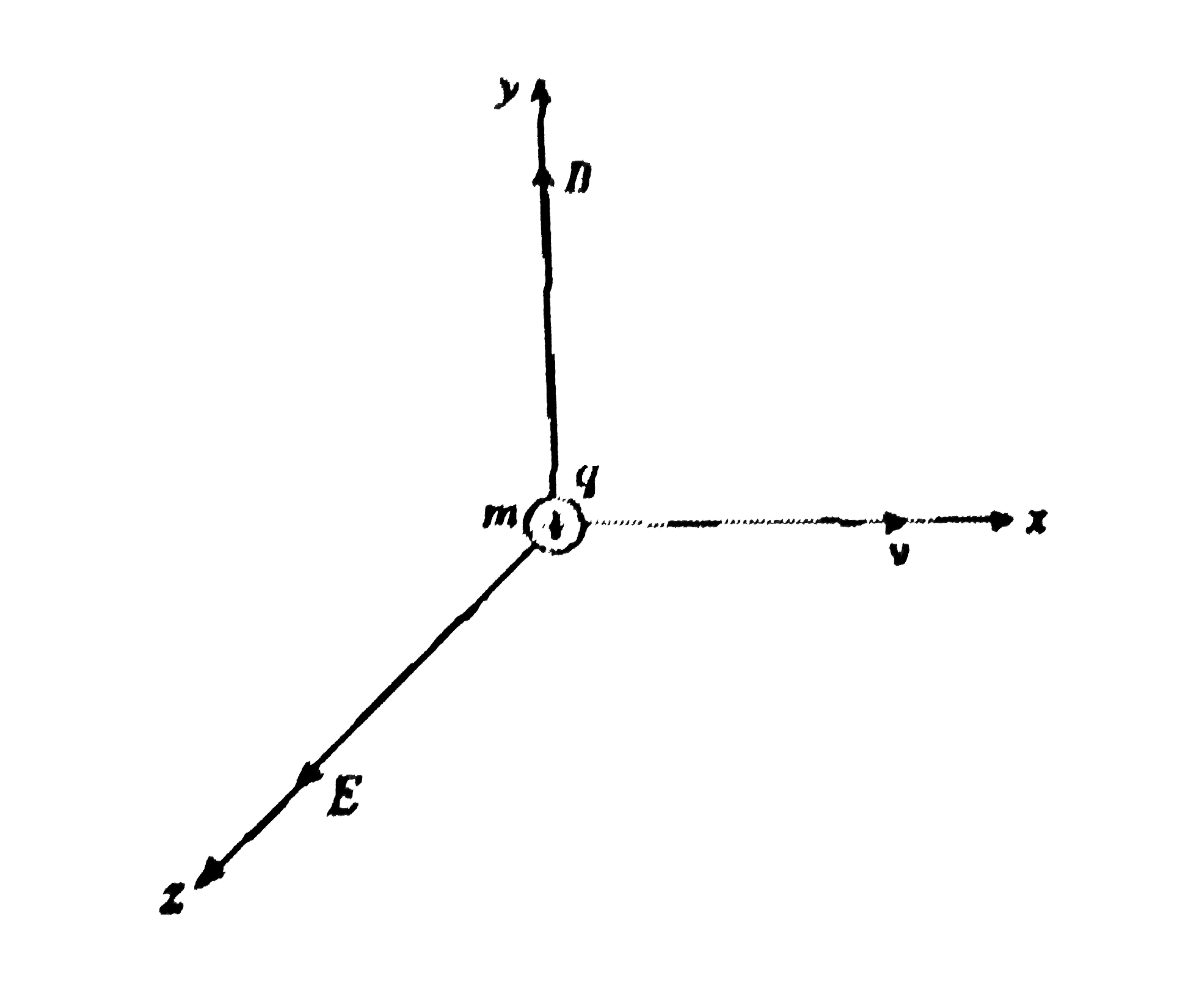A charge particle of charge q, mass m is projected with a velocity →v=vˆi in a region of space where electric field strength →E=Eˆk and magnetic induction →B=Bˆj are present. The acceleration of the particle is:

qvBmˆk
qEmˆk
q(E+vB)ˆkm
q(E−vB)ˆkm
Step by step video & image solution for A charge particle of charge q, mass m is projected with a velocity vecv=vhati in a region of space where electric field strength vecE=Ehatk and magnetic induction vecB=Bhatj are present. The acceleration of the particle is: by Physics experts to help you in doubts & scoring excellent marks in Class 12 exams.
Topper's Solved these Questions
- BOOK - PHYSICS GALAXY - ASHISH ARORACHAPTER - MAGNETIC EFFECTS OF CURRENT AND MAGNETISMEXERCISE - Advance MCQ29videos
MAGNETIC EFFECTS OF CURRENT AND MAGNETISM
- BOOK - PHYSICS GALAXY - ASHISH ARORACHAPTER - MAGNETIC EFFECTS OF CURRENT AND MAGNETISMEXERCISE - U.N.P79videos
MAGNETIC EFFECTS OF CURRENT AND MAGNETISM
- BOOK - PHYSICS GALAXY - ASHISH ARORACHAPTER - MAGNETIC EFFECTS OF CURRENT AND MAGNETISMEXERCISE - Conceptual MCQ37videos
MAGNETIC EFFECTS OF CURRENT AND MAGNETISM
- BOOK - PHYSICS GALAXY - ASHISH ARORACHAPTER - Kinetic Theory of Gases and Gas LawsEXERCISE - Unsolved Numerical Problems for Preparation of NSEP, INPhO & IPhO64videos
Kinetic Theory of Gases and Gas Laws
- BOOK - PHYSICS GALAXY - ASHISH ARORACHAPTER - NUCLEAR PHYSICS AND RADIOACTIVITYEXERCISE - Concptual MCQs48videos
NUCLEAR PHYSICS AND RADIOACTIVITY
Similar Questions
A charged particle, having a charge q, is moving with a speed v along the x-axis. It enters a region of space where an electric field →E(=Eˆj) and a magnetic field →B are both present. The particle, on emerging from this region, is observed to be moving along the x-axis only. Obtain an expression for the magnitude of →B in terms of v and E. Give the direction of →B.
View SolutionWrite the expression for the force →F acting on a charged particle of charge q moving with a velocity →v in the presence of both electric field →E and magnetic field →B . Obtain the condition under which the particle moves underflected through the fields.
View Solution
Knowledge Check
- Question 1 - Select One
A proton is projected with velocity →V=2ˆi in a regionn where magnetic field →B=(ˆi+3ˆj+4ˆk)μT and electric field →E=10ˆiμV/m. Then find out the net acceleration of proton:
A1400m/s2B700m/s2C1000m/s2D800m/s2 - Question 2 - Select One
A positive charge particle of mass m and charge q is projected with velocity v as shown in Fig. If radius of curvature of charge particle in magnetic field region is greater than d, then find the time spent by the charge particle in magnetic field.
 A2mqBsin−1(dqBmv)B2mqBsin−1(mvdqB)CmqBsin−1(dqBmv)DmqBsin−1(mvdqB)
A2mqBsin−1(dqBmv)B2mqBsin−1(mvdqB)CmqBsin−1(dqBmv)DmqBsin−1(mvdqB) - Question 3 - Select One
If a charged particle (+q) is projected with certain velocity parallel to the magnetic field, then it will
Atrace helical pathBtrace circular pathCcontinue its motion without any changeDcome to rest instantly
A charged particle having charge q and mass m is projected into a region of uniform electric field of strength →E0, with velocity →V0 perpendicular to →E0. Throughout the motion apart from electric force particle also experiences a dissipatice force of constant magnitude qE0 and directed opposite to its velocity. If ∣∣→V0∣∣=6m/s, then find its speed when it has turned through an angle of 90∘.
View SolutionWrite the expression for the force →F, acting on a charged particle of charge q moving with a velocity →v in the pressure of both electric field →E and magnetic field →B. Obtain the condition under which the particle moves undeflected through the fields.
View SolutionA particle having charge 'q' and mass 'm' is projected with velocity (4ˆi−6ˆj+3ˆk)m/sec from the origin in a region occupied by electric field 'E' and magnetic field 'B' such that →B=B0ˆi and →E=E0ˆj (take qE0m=2). Find the time (in sec) when the magnitude of velocity of the charge particle becomes 5√5m/sec. (neglect the gravity)
View SolutionIf a charged particle (+q) is projected with certain velocity parallel to the magnetic field , then it will
View SolutionA particle of charge q moves with a velocity →v=aˆi in a magnetic field of →B=bˆj+cˆk where a ,b and c are constants. The magnetic of the force experienced by the particle is
View Solution

